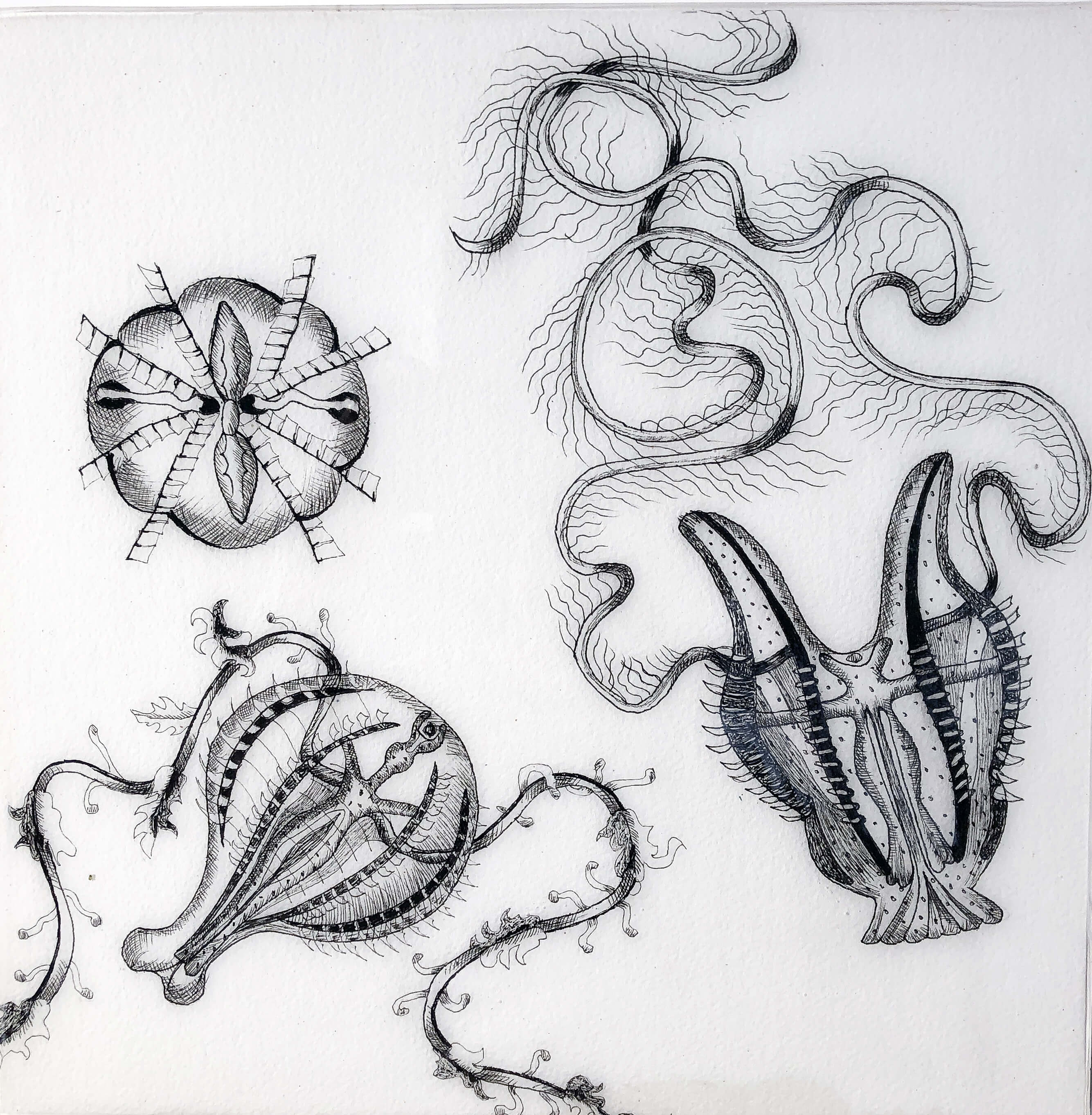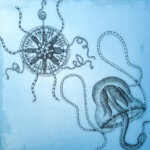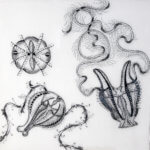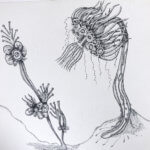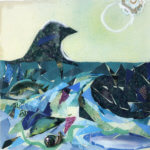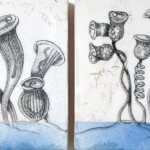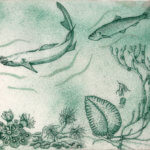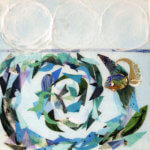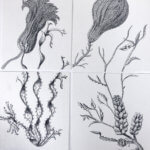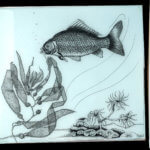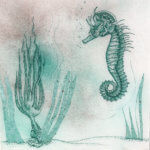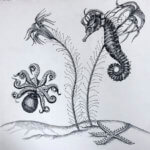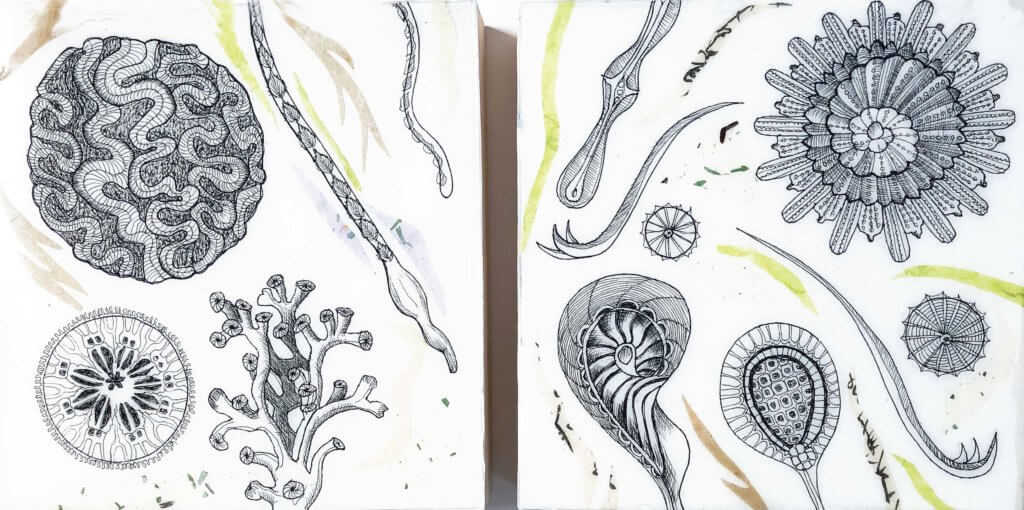
Before the advent of microscopic photography, it fell to the varying artistic skills of scientists to show the world what the invisible plants and animals in our oceans looked like. One of the most prolific and talented was Ernst Haeckel, an 1800s German zoologist and marine biologist whose groundbreaking sketches of organisms such as zooplankton, diatoms and copepods continue to capture the imagination of science enthusiasts and artists to this day.
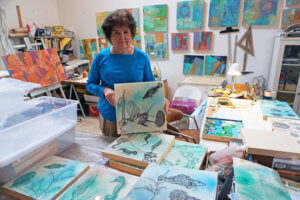 Count among them Monmouth University Professor Pat Cresson, who recently created over 50 works highlighting both microscopic marine organisms and larger sea creatures. Cresson presented her collection, The Interface Between Marine Biology and Creative Microscopic Inhabitants of the Sea, in a free public webinar on Nov. 18. The session was offered as part of the Department of History & Anthropology’s Research and Teaching Pedagogy Seminar Series.
Count among them Monmouth University Professor Pat Cresson, who recently created over 50 works highlighting both microscopic marine organisms and larger sea creatures. Cresson presented her collection, The Interface Between Marine Biology and Creative Microscopic Inhabitants of the Sea, in a free public webinar on Nov. 18. The session was offered as part of the Department of History & Anthropology’s Research and Teaching Pedagogy Seminar Series.
In an interesting twist, Cresson’s focus on the deep sea started with the CDC. In the early days of the COVID-19 pandemic, Cresson was struck by the aesthetic beauty of models showing the virus and began investigating what other infectious diseases looked like. This research eventually shifted to imagery depicting the unicellular and microscopic life forms that are abundant in our waters, as Haeckel had famously done before.
“Art and science are very similar in some perspectives,” Cresson said. “Both science and art are human attempts to understand and describe the world around us. The subjects and methods have different traditions, and the intended audiences are different, but I think the motivations and goals are fundamentally the same.”
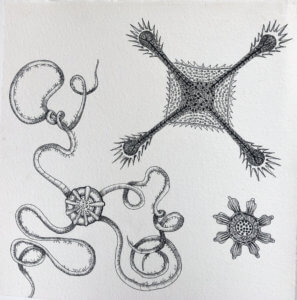 Cresson’s first works in the collection were detailed black ink drawings on heavy white watercolor paper. She then began creating a series of illustrations on deep wood panels that were covered with glued drawings on paper. Then an epoxy surface was poured over these panels, sometimes stained blue or green giving the appearance that they were submerged under water. She also created several collages on paper adhered to wood panels depicting ocean scenes. (Scroll to gallery below to view samples of her works.) Materials for the project were purchased through a faculty enrichment grant awarded via the Urban Coast Institute’s Heidi Lynn Sculthorpe Scholars program.
Cresson’s first works in the collection were detailed black ink drawings on heavy white watercolor paper. She then began creating a series of illustrations on deep wood panels that were covered with glued drawings on paper. Then an epoxy surface was poured over these panels, sometimes stained blue or green giving the appearance that they were submerged under water. She also created several collages on paper adhered to wood panels depicting ocean scenes. (Scroll to gallery below to view samples of her works.) Materials for the project were purchased through a faculty enrichment grant awarded via the Urban Coast Institute’s Heidi Lynn Sculthorpe Scholars program.
Building upon her work, Cresson assigned her Advanced Digital Imaging class to create first traditional collages (cut paper and materials) and then digital collages focused on marine ecosystems. Some of the student works were also presented in the webinar.
“I gave them different ideas – the food web, symbiotic relationships, the role of light in the ocean, the health of the ocean and warming oceans, corals reefs and how they’re being bleached out,” she said. “They came up with some really interesting imagery. I was very happy with what they came up with.”
Image Gallery
Click Thumbnails for Larger View

